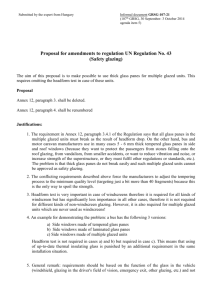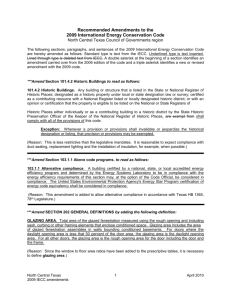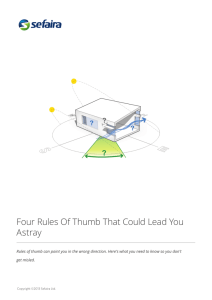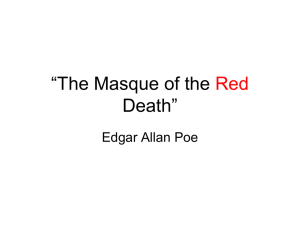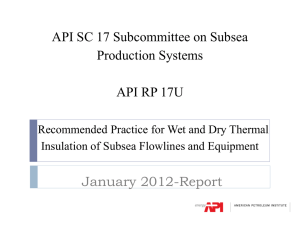Cost optimal facade design solutions
advertisement
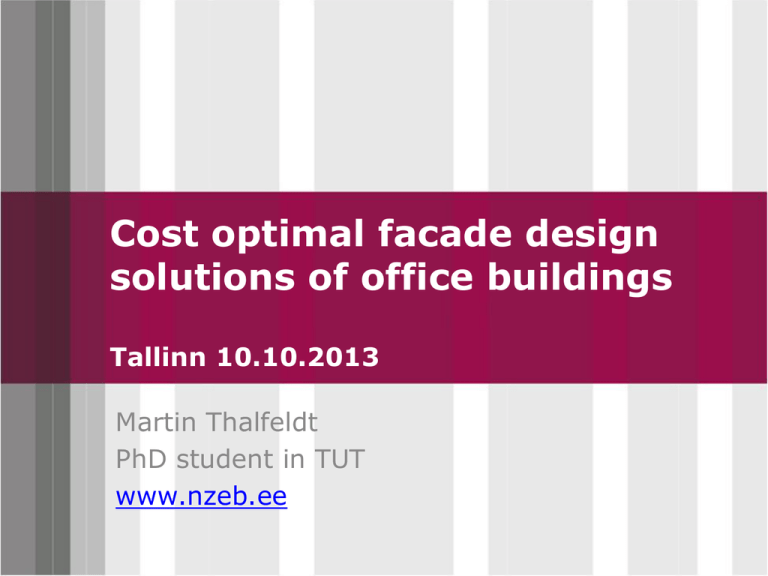
Cost optimal facade design solutions of office buildings Click to edit Master title style Tallinn 10.10.2013 Martin Thalfeldt PhD student in TUT www.nzeb.ee OBJECTIVES • Developing energy and cost efficient facade design principles for nearly zero energy building (nonresidential) • Studies so far: window U>1.0 • Questions: optimal size of windows, highly transparent or solar protection glazing, external shading or not, insulation thickness, facade vs PV • Influenced: daylight, heating, cooling, electric lighting, investment • Study procedures: Energy and indoor simulations + financial calculations of a generic office floor model Number of window panes up to 5, U=0.21 Financial feasability -> min. 20 year NPV Best possible energy efficiency METHODS • • Criteria for most financially feasible case is minimum net present value, which includes investment cost and 20 year energy use. Calculations according to Estonian energy efficiency requirements Smallest energy consumption ≠ min € STEP 1 MINIMUM WINDOW SIZE • Average daylight factor ≥ 2% • Minimum sized windows 𝑫 × 𝑨 × (1 − 𝑹2 𝑨𝒘 = 𝑻×𝜽×𝒎 STEP 1 MINIMUM WINDOW SIZE Glazing U, W/(m2K) g, - τvis, - 2/C 1.1 0.61 0.78 3/C 0.54 0.49 0.70 4/C 0.32 0.36 0.63 3/SC 0.54 0.36 0.60 5/C 0.21 0.24 0.56 2/D 1.0 0.27 0.50 3/D 0.54 0.24 0.45 STEP 2 HIGHLY TRANSPARENT OR SOLAR PROTECTION GLAZING? Delivered energy Primary energy Highly transparent glazing allows reaching better energy efficiency! STEP 3 NUMBER OF PANES AND INSULATION THICKNESS IN BALANCE! • 3 pane glazing – insulation 200 mm (U=0,16) • 4 pane glazing – insulation 250 mm (U=0,13) • 5 pane glazing – insulation 390 mm (U=0,09) STEP 4 ENERGY EFFICIENT FACADE SOLUTIONS MOST ENERGY EFFICIENT FACADE SOLUTION No of panes WWR, % Ext. shading Insulation thickness, mm Primary energy, kWh/m2 Investment €/m2 20 year NPV €/m2 Lõuna 5 60% No 390 86.3 136.1 168.0 Ida 5 60% Yes 390 84.6 175.8 211.9 Lääs 5 60% Yes 390 84.7 175.8 211.9 Põhi 5 60% No 390 87.3 136.1 170.2 Office floor primary energy=85.5 x 1.2 = 102.6 kWh/m2 FINANCIALLY MOST FEASIBLE SOLUTION No of panes WWR, % Ext. shading Insulation thickness, mm Primary energy, kWh/m2 Investment €/m2 20 year NPV €/m2 Lõuna 3 37.5% No 200 96.7 96,3 140.3 Ida 3 37.5% No 200 95.7 89,9 140.6 Lääs 3 37.5% No 200 97.3 89,9 142.1 Põhi 3 37.5% No 200 97.8 96,3 143.4 Office floor primary energy=93.6 x 1.2 = 112.6 kWh/m2 COOLING CAPACITIES • Window size affects cooling capacities in addition to energy consumption • Triple glazing with WWR ca 25% might be a more sensible solution FROM LOW ENERGY TO NZEB 3 4 5 5 panes, panes, panes, panes, WWR WWR WWR WWR 37.5% (Cost optimal) 37.5% (North 60%) 29.5% 60% (Energy efficient) CONCLUSION • Space heating dominates in case of double and triple windows, the proportion of heating reduces as no of panes increases • Smaller windows result in better energy efficiency in case of double and triple glazing • Financially most feasible case is triple glazing with high thermal resistance (U=0.54 g=0.49), window to wall ratio ca 25%, insulation thickness 200 mm (U=0.16) • Best energy efficiency was achieved with quintuple glazing (U=0.21 g=0.24), window to wall ratio 60%, insulation thickness 390 mm (U=0.09) • In case of quadruple glazing (U=0.32 g=0.36) the optimal window to wall ratio is ca 40% • External shading is not necessary if windows are sized according to average daylight factor 2% • It is more reasonable to use cost optimal facade solution and install more PV panels • Necessity to study the influence of external shading control strategies and double facade on energy efficiency occurred


